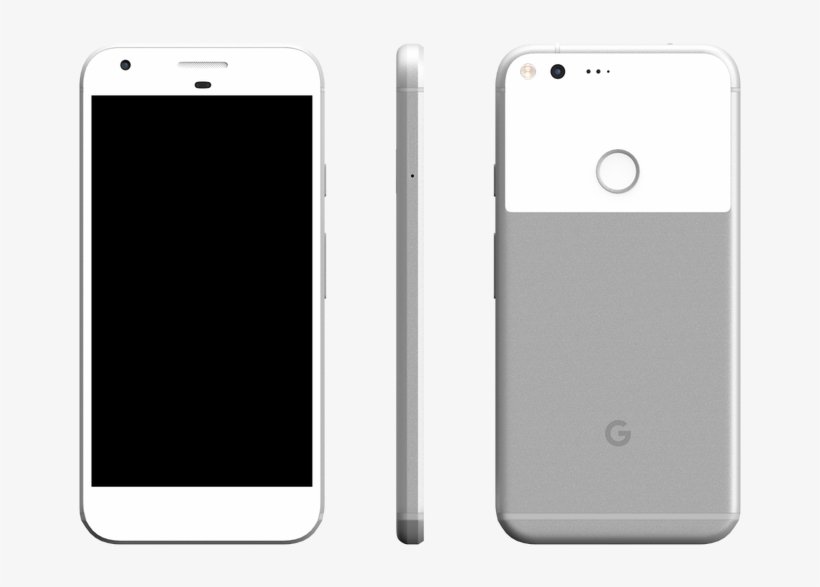Following our introduction to the Google Pixel line, it’s time to go back to where it all began: the original Google Pixel and Google Pixel XL. Launched in October 2016 at Google’s “#MadeByGoogle” event and released later that month, these phones weren’t just new devices; they represented a fundamental shift in Google’s smartphone strategy, moving away from the Nexus partnership model to creating hardware entirely under its own control.
Design: A New Identity

The first Pixels established a design language that, while perhaps looking a bit dated now with its noticeable bezels, was distinct at the time. Both phones featured:
- Aluminum Unibody: A solid-feeling metal construction.
- Glass “Window”: A unique polished glass panel covering the top third of the back, housing the camera, flash, and the rear-mounted “Pixel Imprint” fingerprint sensor. This became an early visual signature for the line.
- Colors: They launched in “Quite Black” and “Very Silver,” with a limited edition “Really Blue” available later. Google’s slightly quirky color naming started here!
- Ports: Thankfully for many at the time, they included a standard 3.5mm headphone jack alongside the then-new USB-C port for charging and data.
- Durability: They offered IP53 splash and dust resistance – okay for light rain, but not full submersion.
Two Sizes, Similar Core:
Google offered two sizes to cater to different preferences:
- Pixel: 5.0-inch AMOLED display with a Full HD (1080 x 1920) resolution.
- Pixel XL: 5.5-inch AMOLED display with a sharper Quad HD (1440 x 2560) resolution and a larger battery (3450 mAh vs 2770 mAh).
Crucially, unlike some competitors, Google kept the core specifications largely identical otherwise. Both ran on the powerful Qualcomm Snapdragon 821 processor with 4GB of RAM, offering either 32GB or 128GB of fast UFS 2.0 storage. This meant choosing between them was primarily about screen size and battery preference, not sacrificing performance.
The Camera That Changed the Game
If there was one standout feature, it was the camera. Despite having fairly standard specs on paper (12.3MP rear sensor, f/2.0 aperture, 8MP front), the Pixel’s camera blew reviewers away. Why? Computational Photography.
- HDR+: Google’s processing technique, which captured multiple short exposures and combined them, was enabled by default and worked incredibly quickly. It delivered outstanding dynamic range, detail, and color accuracy, especially in tricky lighting.
- EIS, Not OIS: The Pixel lacked Optical Image Stabilization, relying instead on very effective gyroscope-based Electronic Image Stabilization for smooth video.
- High Praise: It received a DxOMark score of 89, the highest ever awarded to a smartphone camera at that time.
- Unlimited Storage: A major perk was the offer of free, unlimited original-quality storage for all photos and videos taken with the Pixel on Google Photos – a huge selling point.
Software: Pure Google, Plus Assistant
Running Android 7.1 Nougat out of the box, the Pixels offered the clean, responsive experience Google fans expected. Key software highlights included:
- Google Assistant Built-In: This was the first phone with Google Assistant deeply integrated. Users could long-press the home button or say “OK Google” to access it for natural language queries, setting reminders, controlling smart home devices, and more. It felt futuristic and genuinely useful.
- Pixel Launcher: A clean, exclusive home screen experience with rounded icons and the signature “pill” search widget and weather information.
- Timely Updates: Being a Google phone meant direct and fast Android version and security updates (it eventually received updates up to Android 10).
Reception and Legacy
The Pixel and Pixel XL were generally very well-received. Critics lauded the incredibly smooth performance (often called the best Android experience available), the groundbreaking camera, and the seamless Google Assistant integration.
Criticisms often centered on the somewhat uninspired design (especially the bezels), the lack of robust waterproofing compared to rivals like the iPhone 7, and the price – starting at $649/$769, it was a significant jump from the more budget-friendly Nexus phones.
Despite these points, the first-generation Pixel successfully established Google as a serious hardware player. It set the benchmark for smartphone photography through software prowess and proved that Google could create a premium, cohesive hardware and software experience to rival the best in the industry. It truly was the phone that started it all for the Pixel line we know today.
How does that sound for the first generation? Ready to move on to the Pixel 2 next time?
